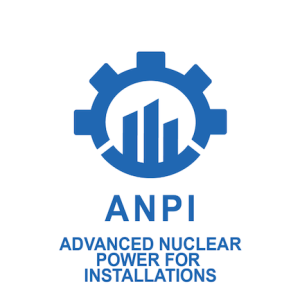 A consignment of Russian equipment has been delivered to the construction site of the International Thermonuclear Experimental Reactor (ITER) under construction at Cadarache in France, Russian state nuclear corporation Rosatom said on 23 April.
A consignment of Russian equipment has been delivered to the construction site of the International Thermonuclear Experimental Reactor (ITER) under construction at Cadarache in France, Russian state nuclear corporation Rosatom said on 23 April.
The six trailers with electrical equipment for the ITER reactor left the DV Efremov Scientific Research Institute of Electrophysical Apparatus (NIIEFA) in St Petersburg on 9 April and are now awaiting unloading at the ITER site. The equipment includes busbars for coils of a poloidal field, a central solenoid, correcting coils, as well as supports for mounting busbars, beams, resistors and auxiliary equipment.
On 21 April, three more vehicles with Russian equipment left NIIEFA and are expected to arrive in early May. Another trailer will leave for France on 27 April.
The equipment is supplied through cooperation between the ITER International Organisation, the ITER Centre Private Institution (Rosatom enterprise), the transport organisation, and NIIEFA. It was designed and manufactured by NIIEFA under an Agreement on the supply of switching equipment, concluded in 2011 between the Rosatom ITER Design Centre – the Russian ITER Agency – and the ITER Organisation.
Switching equipment, busbars and energy-absorbing resistors for power supply and protection of the ITER reactor superconducting magnetic system is 100% in the sphere of responsibility of Russia.
The latest delivery was subject to additional restrictions associated with the coronavirus pandemic, at the urgent request of the ITER Organisation. However, the coordinated actions of NIIEFA, the ITER Centre and the ITER Organisation allowed the delivery to be carried out in full accordance with the reactor construction schedule, Rosatom said.
First coil arrives from Italy
Earlier in April, despite the difficulties caused by the Covid-19 emergency, the first of the giant superconducting magnets destined for the ITER project arrived at Cadarache from Italy.
The equipment, worth around €100 million, was the result of cooperation involving leading Italian companies in the sector, such as ASG Superconductors, SIMIC and the ICAS consortium (with ENEA).
To protect it during the journey, the supercoil – 17 metres high and 9-metres wide was "packed" with a 100-tonne structure that brought the total weight of the load to 420 tonnes. Transporation took almost a month by sea and by road, from the port of Marghera (Venice) to the ITER site. The transport was the responsibility of SIMIC, a Cuneo company, which was involved in manufacturing half of the radial plates required for the 10 European TF coils and the final manufacturing steps for the TF coils-cryotests and insertion, as well as cold tests.
Mammoet, the Dutch company contracted by ITER global logistics provider DAHER, had designed a unique transport vehicle: a 342-wheel, self-propelled modular transporter powered by a pair of 1000 hp power packs.
The supercoil was manufactured at the La Spezia plant of the ASG Superconductors (Malacalza), by order of the European consortium Fusion for Energy (F4E), the EU Agency that manages the European contribution to the ITER project as contracts and orders. Italy is also supplying five kilometres of superconducting cables, designed and manufactured by the ICAS Consortium which includes ENEA and two leading companies in the sector, Criotec Impianti and Tratos Cavi.
The magnet is the first of the ten to be made in Europe. Its role will be fundamental for the realisation of the magnetic confinement. In total, the coils will number 18: ten made in Europe and eight plus one spare in Japan.
ITER construction is funded mainly by the European Union (45.6%) with the remainder shared equally by China, India, Japan, Korea, Russia and the USA (9.1% each). However, in practice, the members deliver little monetary contribution to the project, instead providing ‘in-kind’ contributions of components, systems or buildings.






